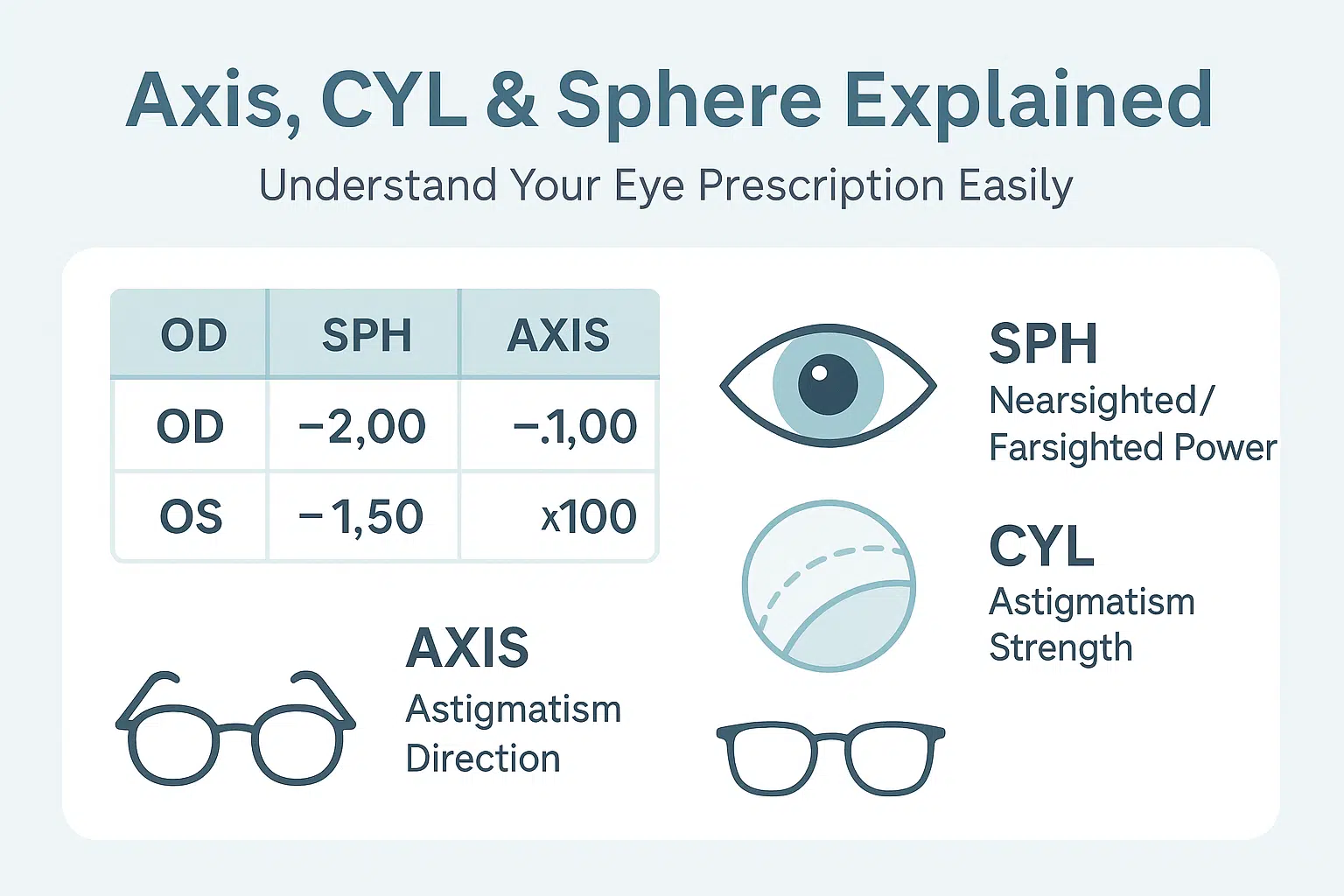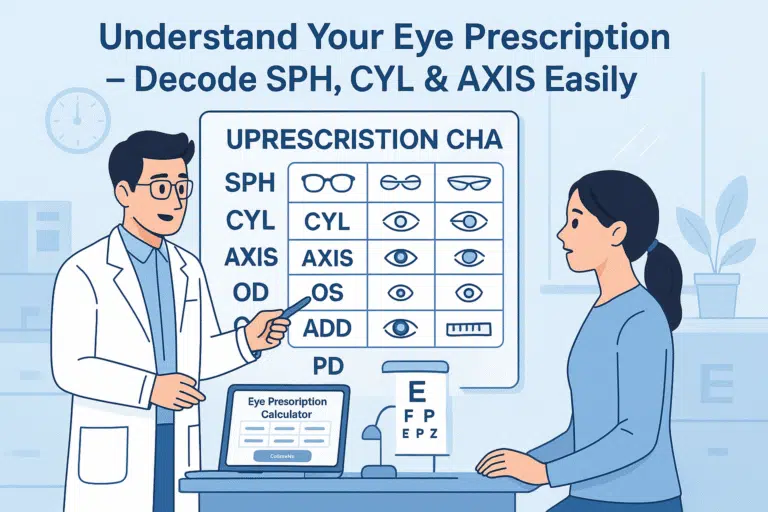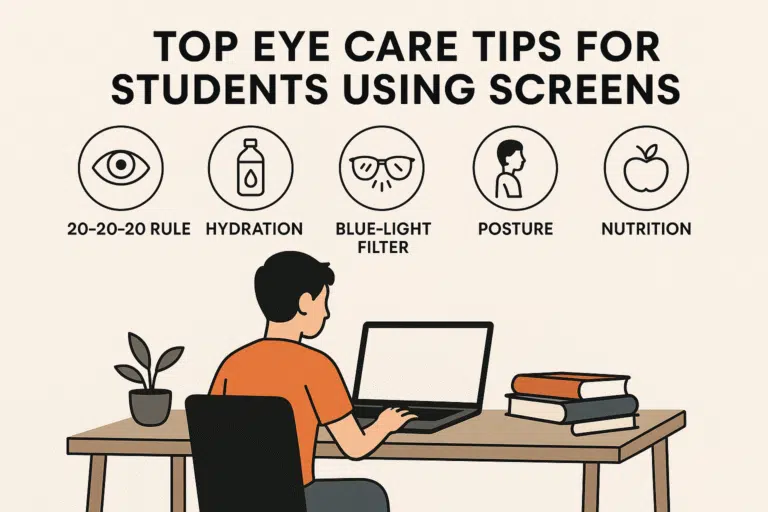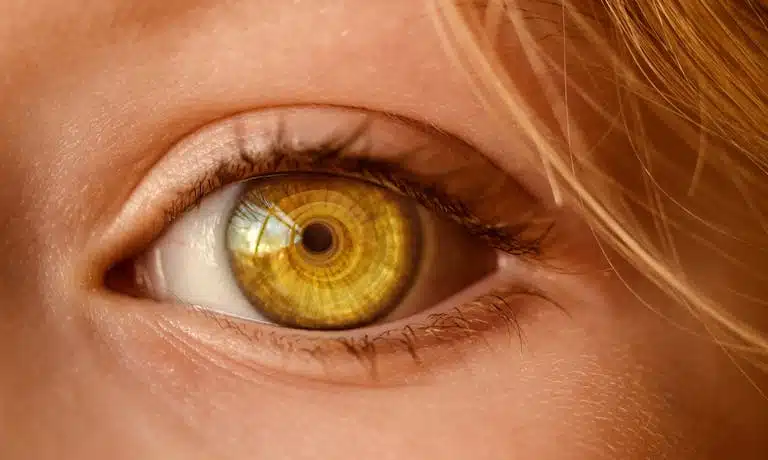Decode “Axis” on Eye Prescription – Avoid Blurry Glasses
Did you ever look at your eye prescription and get thoroughly confused by such terms as Axis, Cyl, or Sphere? You are not alone. The majority of people walk out of the eye doctor with numbers that they do not really comprehend, and that bewilderment accompanies them when they are required to place an order for glasses or when there is a need to check vision changes.
I am Laura, the owner and writer of EyesOnHunt.com. I make eye health information easy, correct, and, in fact, useful. I am not writing to sound technical—now you can know what your prescription is telling you, and you are not at all second-guessing.
In this blog, I explain what the Axes, Cylinders (CYL), and Spheres mean in your eye prescription, why they’re important, and how they work together.
What Is Axis on Eye Prescription?
When you see the word “Axis” on your eye prescription, it has everything to do with astigmatism correction. If you don’t have astigmatism, this section might even be blank.
Axis Explained Simply
This axis is a number of 1 to 180 degrees. It informs the lens manufacturer of where to put the correction of the cylinder in your glasses. However, bear in mind axis never exists in isolation; it is used with (cylinder.
Here’s how it works:
- Cylinder corrects the curve problem in your eye.
- Axis tells the lens where to place that correction.
Example:
If your prescription says:
CYL: -1.00
AXIS: 90
What Is Axis in Eye Prescription (And Why You Should Care)?
Let me put it this way: if you have astigmatism and your axis is wrong, your glasses won’t fix your vision correctly. You might still see blurry or stretched images even if the numbers seem right.
Axis Numbers Look Like This:
- 10
- 45
- 90
- 135
- 180
In some cases, physicians achieve it by writing in three digits, such as 010, 09,0 or 180. It means the same thing.
What Happens If the Axis Is Incorrect?
You could experience:
- Blurry vision
- Eye strain
- Headaches
- Distortion
- Discomfort when focusing
Yes, it is true axis is more than meets the eye.
What Does Axis Mean on Eye Prescription?
Think of the axis as the orientation of your astigmatism correction. You have two main curves on your cornea or lens. When one is steeper than the other, that uneven shape causes astigmatism.
The cylinder fixes the blur.
The axis informs the lens in which direction to make up.
Quick analogy
Imagine tying a band around a football. Where you tie it depends on the direction of the curve. That’s exactly what axis does for your lens.
What Is CYL in Eye Prescription?
Now let’s talk about “CYL”, short for cylinder.
In case I become your writer, I would have to be the axis, as well as explain C, YL, as they are a pair.
What CYL Means
CYL is the amount of lens power needed to correct your astigmatism. It shows how much your eye shape deviates from being perfectly round.
You’ll see:
- Negative (-) cylinder in most prescriptions (common in the U.S.)
- Positive (+) cylinder in some regions
Example:
CYL: -1.25
This informs the optician of the level of strength of the correction required.
In case of a CYL value, an Axis value must be adjacent to it.
What Is CYL on Eye Prescription?
I understand that the words used become monotonous and this is why I have provided a user-friendly summary:
- CYL shows how much astigmatism you have
- It will only be apparent when there is astigmatism.
- It works together with Axis.
- It could be written as:
- -0.25
- -0.50
- -1.00
- +0.75 (rare)
If the CYL box is empty, you probably don’t have astigmatism, or it’s too minor to correct.
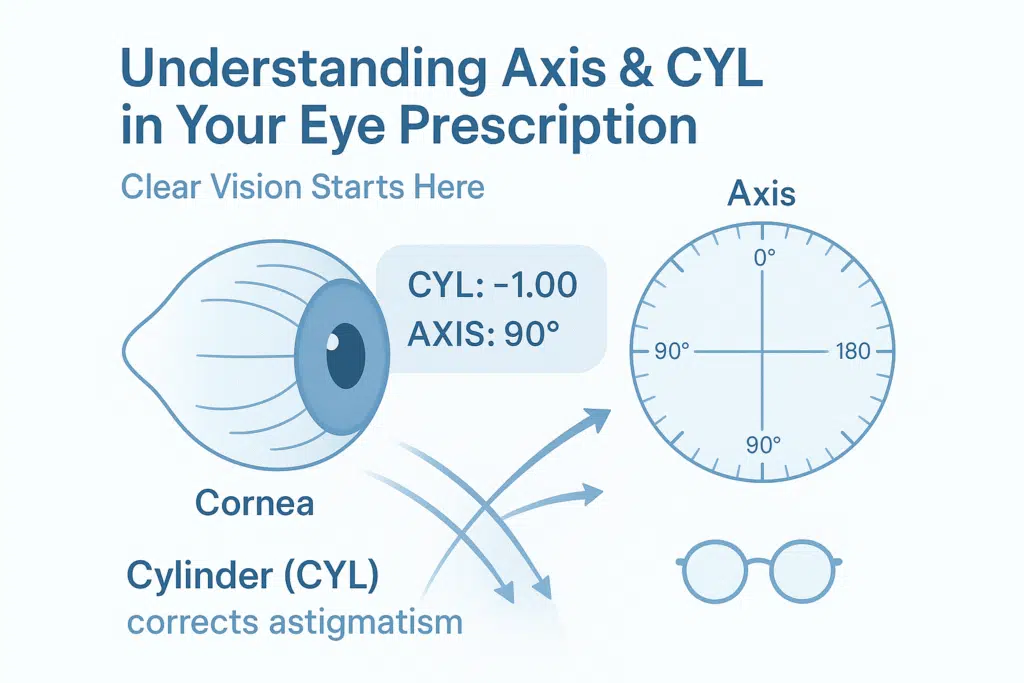
Read Also: Contact Lens Inside Out? 5 Easy Ways to Check
What Is Sphere in Eye Prescription?
Next, we will go to the SPH or Sphere, the foundation of most prescriptions.
What SPH Means
The sphere describes the corrective power required in your eye to see properly, either for short distances or long distances.
- Negative (-) means you’re nearsighted (distant blur)
- Positive (+) means you’re farsighted (near blur)
Example
SPH: -2.00: You have difficulty with long-distance vision.
SPH: +1.50 + You have difficulty seeing close up or reading.
The entire lens is subjected to sphere correction. The only change to the lens is made by the cylinder and axis.
Breaking Down a Full Prescription Example
I would like to demonstrate to you a standard prescription form to be able to compare it with the one you have.
Right Eye (OD):
SPH: -2.00
CYL: -1.00
AXIS: 80
Left Eye (OS):
SPH: -1.50
CYL: -0.50
AXIS: 100
In this case:
- You have weak eyesight in both eyes.
- You have astigmatism in both eyes.
- The numbers on the axis vary as both eyes have varying curvatures.
Do You Always Need Axis and Cylinder?
Not always. In case you do not have astigmatism, then the prescription will simply contain the Sphere value.
If your eyes only need help with distance or reading, the CYL and Axis sections might be blank.
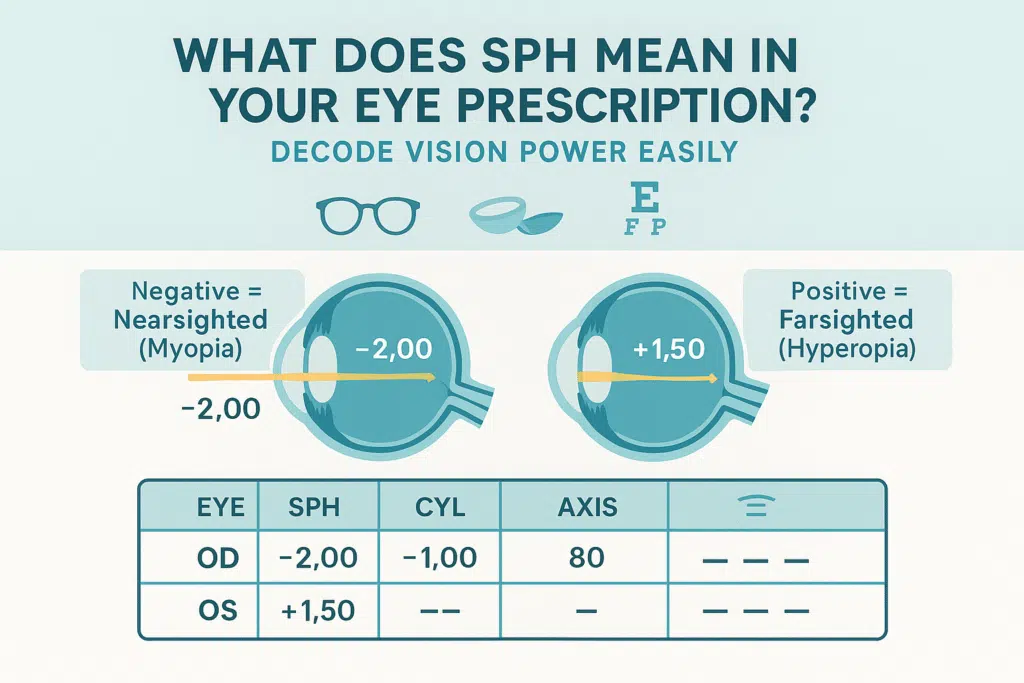
Why You Might See Three Numbers Side by Side
If you see something like:
-2.50 / -1.25 x 90
Here’s how that breaks down:
- -2.50 → Sphere
- -1.25 → Cylinder
- 90 → Axis
FAQs
What does the axis on an eye prescription actually mean for your vision?
The axis shows where your astigmatism is located and tells the lens maker how to position the correction. If the axis is wrong, your glasses won’t give you clear vision.
Why does CYL appear on some eye prescriptions, and do you need it?
CYL (Cylinder) is only listed when you have astigmatism. It shows the strength of correction needed to fix uneven curvature in your eye.
What is considered a normal or healthy eye axis?
It has no single normal number; the axis is 1 to 180 degrees. It depends on the shape of your eyes, and you are given a number and which is only significant when you have astigmatism.
What does SPH do in an eye prescription?
SPH (Sphere) shows whether you’re nearsighted or farsighted and how strong your main vision correction needs to be.
Read Also: Glasses Keep Slipping? Try These Optician-Approved Fixes
Final Thought
It does not necessarily require you to be confused by your eye prescription. When Axis, CYL, and Sphere are understood, you will be able to read your numbers and not make any mistakes when ordering glasses or monitoring the vision change. Axis indicates to the lens where to correct astigmatism, CYL indicates how intense that correction is, and Sphere addresses nearsightedness or farsightedness. You are not simply wearing a prescription now that you know how each part works, you know. You can use our eye prescription calculator for more details.

